Von Johannes Schüller
Dostojewski, Danilewski, Dugin: Marksteine russischer Identität
Ex: http://www.neue-ordnung.at
Durch die ukrainische Krise könnte die NATO erstmals seit dem Zusammenbruch der Sowjetunion 1991 wieder einen ebenbürtigen geopolitischen Gegner finden. Die Russische Föderation unter Präsident Wladimir Putin wächst nach der wirtschaftlichen und politischen Not der 1990er Jahre zur neuen Kontinentalmacht heran. Schlagworte wie „Eurasien“ bündeln auch die Hoffnungen einiger rechter Kritiker weltweiter US-amerikanischer Dominanz. Doch die Ideen dahinter sind alt: Das multiethnische Rußland hatte nie die Gestalt des klassischen europäischen Nationalstaates. Seit dem 19. Jahrhundert entstanden deshalb verschiedenste Ideen, dem Westen eine andere, konservative Identität gegenüberzustellen.
Drei Schlüsselereignisse trieben die Entwicklung des russischen Selbstbewußtseins voran. Das erste, wahlweise als traumatisch oder initial wahrgenommene Ereignis bildete die Herrschaft Peter des Großen von 1682 bis 1725. Seine am westeuropäischen Vorbild orientierten Reformen in der Wirtschaft, Verwaltung, im Schulwesen und Militär sicherten Rußland den Weg zur Großmacht. Zugleich stellten sie aber auch die altrussische Reichsidentität, die sich am mittelalterlichen Erbe des Moskauer Großfürstentums und der einer vor allem bäuerlichen geprägten Gesellschaft orientierte, fundamental in Frage. Doch auch Peter I. konnte Rußlands Staat und Kirche, dieses seltsame „Gemisch von byzantinischem, lateinischem und mongolischem Ursprung“1, nicht endgültig europäisieren.
Die Dekabristen: Volksbegriff der deutschen Romantik
Gut hundert Jahre später folgte das zweite Schlüsselereignis: Kaiser Alexander I., Herrscher von 1801 bis 1825, führte 1812 den ersten „Vaterländischen Krieg“ des Russischen Reiches gegen Napoleon. Trotz der französischen Niederlage wirkte der kulturell-geistige Einfluß des modernen Europas bis tief ins 19. Jahrhundert nach. Junge, adelige Offiziere kamen als Besatzer mit den sich herausbildenden Nationalstaaten Europas, dem Konstitutionalismus und den Ideen der Aufklärung in Berührung. Diese Erfahrung führte unter anderem, ausgehend von Soldaten und Offizieren, zum Aufstand der Dekabristen am 14. Dezember 1825 als „erste[r] Erfahrung Rußlands mit der politischen Revolution“2. Den Anlaß bildete der eingeforderte Eid auf den neuen Kaiser Nikolaus vor Senat und Synode in St. Petersburg. In ihren oppositionellen Verfassungsentwürfen stellten sie den alten Reichspatriotismus in Frage und setzten an seine Stelle einen auch den Ideen der deutschen Romantik entlehnten Volksbegriff.
Sprache und Geburt galten demnach erstmals als entscheidendes Kriterium für die russische Staatsbürgerschaft. Angesichts des bisherigen übernationalen und sich vor allem am Zaren-Patriarch orientierten Selbstverständnisses handelte es sich um eine revolutionäre Forderung. Zudem forderte die dekabristische „Wohlfahrtsunion“, offenbar inspiriert vom Vorbild der Französischen Revolution, eine sprachliche und politische Homogenisierung der Bevölkerung des Reiches, die Durchsetzung einer vorpetrinischen Terminologie und eine Reinigung der russischen Sprache von Fremdwörtern. Im Mittelpunkt dieses Programms stand das russische Volk als Kulturnation, das „narod“. Dieses Wort sollte zum Schlüsselbegriff eines ethnischen russischen Nationalismus werden.
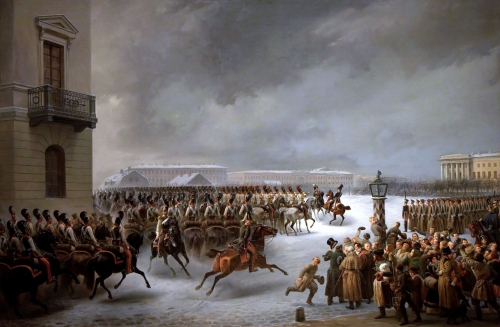
Der Nationalismus begann in Rußland konservativ
Diese von Westeuropa inspirierte Identität trug revolutionären Charakter, denn ein vorrangig auf das Volk als Kulturnation bezogenes Bewußtsein gab es zuvor in Rußland kaum. Die zwei Säulen der Reichsidentität, die sich seit dem 16. Jahrhundert durchsetzte, bildeten die Herrschaft des Zaren als Autokraten sowie dessen Legitimation und Verbindlichkeit durch die orthodoxe Kirche. Erst Mitte des 18. Jahrhunderts lassen sich erste Anzeichen eines kultur- und sprachbezogenen Nationalbewußtseins im gebildeten Adel feststellen.3 Der russische Nationalismus hatte, anders als in Westeuropa, einen konservativen Ursprung: Ein Zeugnis davon legt die „Schrift über das alte und neue Rußland“ des offiziellen Reichshistoriographen Alexanders I. und Schriftstellers Nikolai Michailowitsch Karamsin ab. Karamsin, der zuerst mit der Französischen Revolution sympathisierte und schließlich zu einem ihrer entschiedensten Kritiker wurde, bezog in diesem 1811 veröffentlichen Werk deutlich Stellung gegen westeuropäische Einflüsse und berief sich statt dessen auf die nationalrussische politische und kulturelle Tradition.
Die entscheidende Rolle in der offiziellen Durchsetzung eines dezidiert konservativen Nationalbewußtseins aber sollte Sergei Semjonowitsch Uwarow spielen: Als „Minister für Volksaufklärung“ unter Nikolaus I., der als Kaiser von 1825 bis 1855 die Abwendung Rußlands vom einstigen Vorbild Westeuropa betrieb, setzte er die sogenannte Uwarowsche Triade durch. Sie gilt als „Gründungsurkunde des russischen Nationalismus“. Ihre drei Elemente hießen „Orthodoxie“, „Autokratie“ und „volksverbundener Patriotismus“, „narodnost“ im russischen Original. Uwarow zog damit zugleich die Konsequenzen aus dem gescheiterten Dekabristenaufstand. Er übernahm die Sprache des politischen Gegners, um sie zugleich im Sinne des zaristischen Vielvölkerreichs umzuinterpretieren, in dessen Mittelpunkt Rußland als führende Nation verstanden werden sollte. Der politischer Notwendigkeit geschuldete Kompromiß zwischen Reichs- bzw. Staats- und Volksidentität blieb bis ins heutige, moderne Rußland erhalten. Der modellierte Nationalismus Uwarows sollte aber zugleich die Integrität eines vor allem multiethnischen Reiches auf die Probe stellen, denn die „Umgründung des Imperiums in einen russischen Nationalstaat“4 stellte das bisherige Selbstverständnis des Zarismus in Frage.
Die Slawophilen: Dorfgemeinschaft als Ideal
Deutlich wird das auch in der sich Mitte des 19. Jahrhunderts etablierenden Bewegung der Slawophilen. Sie trieben gemeinsam mit den ideologisch konträren Westlern die öffentliche Debatte um die russische Identität voran. Unter dem Einfluß des aufkeimenden Nationalbewußtseins und der deutschen Schule des Idealismus, darunter Friedrich Wilhelm Schelling und Friedrich Hegel, etablierten sie einen auch dem deutschen Idealismus entlehnten Volksbegriff. Zu den Kernelementen der Mehrheit der Slawophilen gehörten vor allem die dezidierte Kritik am zeitgenössischen Zarenreich, die Forderung nach einer „theologiefreien Volkskirche“ – im Gegensatz zur orthodoxen Staatskirche –, eine Idealisierung des einfachen Volkes sowie des vormodernen, also in erster Linie vorpetrinischen Rußlands. Das hieß konkret, so die Osteuropa-Historiker Frank Golczewski und Frank Pickhan: „Moskau statt St. Petersburg, Einheimische statt ‚fremder‘ Berater, das friedliche Leiden und Fühlen der Russen gegen das oberflächliche, rationalistische, dominierende Agieren der Ausländer.“5 Im Gegensatz zur kriegerischen Entwicklung des Westens sei Rußland aus Liebe und Gewaltlosigkeit entstanden, urteilte der russische Romantiker Stepan Petrovič Ševyrev. Verkörpert wurde dieses explizit vormoderne Selbstverständnis in der „obščina“, dem Urtypus der bäuerlichen Dorfgemeinde. Diese Identität ließ politisch zweierlei zu: zum einen die grundlegende Auffassung, „daß das russische Volk demokratisch war“6 und in seiner regionalen Vielfalt auch grundlegende kommunale Selbstbestimmung Ausdruck findet, und zum anderen die Besinnung auf die überlieferte familiär-patriarchalische Ordnung des Dorfes, die auf Reichsebene in der Autorität des Zaren gipfelt.
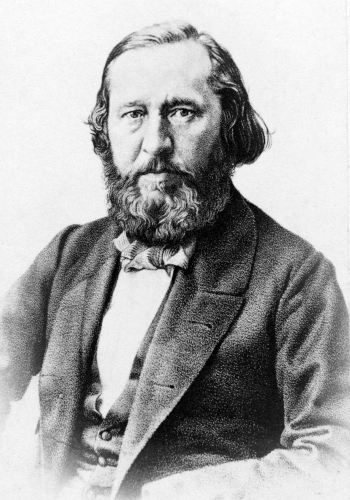
Aleksandr Nikolaïevitch Axakov
Anders als in Europa bezog sich der Nationalismus im Zarenreich in seinen Ursprüngen zudem nicht auf das sich gesellschaftlich durchsetzende Bürgertum, sondern stärker auf Prekariat und Bauerntum. Die Verbindung von Unterschichtenbewußtsein und Nationalismus bildet bis heute in Rußland eine wichtige Denkschule, etwa in Gestalt des linke und rechte Elemente vereinenden Nationalbolschewismus der 1990er Jahre.
Die Gleichsetzung russischer Identität und des Unterschichtenbewußtseins spiegelt sich im 19. Jahrhundert vor allem im Werk von Fjodor Michailowitsch Dostojewski wider. Als sein weltweit „bekanntester russischer Roman“ darf bis heute Schuld und Sühne gelten. Hier treffen die Metropole St. Petersburg heimatlose, entwurzelte Großstädter und Provinzmädchen ebenso wie die psychologischen Defekte der Moderne gegenüber christlich-orthodoxer Erweckung aufeinander. All dies bündelt sich in der Figur des 23jährigen ehemaligen Jurastudenten und Mörders Rodion Romanowitsch Raskolnikow. Dieser lebt um 1860 in ärmlichsten Verhältnissen und wohnt in einer düsteren, sargähnlichen Dachstube, die „eher einer Handkammer oder einer Art Schrank als einem Wohnraum“ ähnelt, inmitten des „unerträglichen Geruchs aus den Schenken“ von St. Petersburg. Er ist „so schlecht gekleidet, daß manch einer, selbst ein an schlechte Kleidung gewöhnter Mensch, sich geschämt hätte, in solchen Lumpen am Tag auf die Straße zu gehen.“7 Zugleich erweist sich Raskolnikow intellektuell jedoch als überdurchschnittlich begabt. Als vermeintlich außergewöhnlicher Mensch gesteht er sich die gleichen moralischen Privilegien zu, die beispielsweise auch Napoleon für sich in Anspruch hätte nehmen können. Das Opfer dieses Größenwahns ist eine alte herzlose Wucherin, die er als unnötige Last der Menschheit betrachtet und, ebenso wie deren geistig minderbemittelte Schwester, ermordet.
 Dostojewski: National-religiöse Überwindung des Nihilismus
Dostojewski: National-religiöse Überwindung des Nihilismus
Doch Raskolnikow zeigt sich seiner Tat nicht gewachsen. Er wird zunehmend nervöser und verräterischer, obwohl er offenbar einen „perfekten Mord“ ohne eindeutige Spuren durchgeführt hat. Dennoch wird Raskolnikow nach zwei, oftmals durch Fieberfantasien unterbrochenen Wochen als Mörder gefaßt. Seine Schwester und die Mutter aus der russischen Provinz, die als Personifikationen ärmlicher Unschuld erscheinen, können die Verwirrung Raskolnikows erst kaum verstehen. Ins sibirische Zuchthaus treiben ihn der Untersuchungsrichter Porfirij Petrowitsch, der ihn unter anderem mit einer Diskussion über die Idee des Übermenschen auf die Schliche kommt, sowie die Prostituierte Sonja Marmeladow. Petrowitsch jedoch fehlen die belastenden, eindeutigen Beweise, obwohl alles auf Raskolnikow als Mörder hindeutet.
Die ehemalige Prostituierte aber, die selbst tiefgläubig ist, überredet Raskolnikow zum Geständnis, damit er seine Sünde bereue. Vor Gericht bekennt dieser die Tat in vollem Umfang, beschuldigt sich noch zusätzlich selbst und erklärt, er habe „infolge aufrichtiger Reue“ seine Selbstanzeige bei der Polizei vorgenommen. Den Aufenthalt im sibirischen Straflager, in dem ihn seine Freundin Sonja regelmäßig besucht, beschreibt der Erzähler – im Gegensatz zu Raskolnikows Zeit in St. Petersburg – als Freiheit. Der Verurteilte nähert sich dank Sonja dem einst verschmähten Christentum, freilich ohne in der Bibel zu lesen. Gemeinsam mit ihr träumt er von einer Zukunft in Sibirien, fernab von St. Petersburg. Dabei ahnt Raskolnikow, daß er sein neues Leben mit „einer großen künftigen Tat werde bezahlen müssen“.8
Die ins Mythische verweisende Selbsterneuerung Raskolnikows im letzten Kapitel von Schuld und Sühne bleibt dunkel. Sie läßt sich als beispielsweise „religiöse Überwindung des Nihilismus“9 oder Abwendung von den in St. Petersburg damals „modernen, landläufigen Ideen der materialistischen Philosophie“10 deuten. Über der psychologischen und kriminalistischen Tiefenstruktur möglicher Interpretationen bleiben jedoch die Kontraste deutlich, die Dostojewski in seinem ersten großen und bekanntesten Roman als Slawophilen kennzeichnen. Die moderne, westliche Großstadt St. Petersburg erscheint als Ort des Verbrechens, des Gestanks und ungerechter Armut, das Zwangsexil in der sibirischen Verbannung deutet jedoch die Erlösung Raskolnikows an. Sein Verbrechen rechtfertigt er ausgerechnet durch einen Vergleich mit Napoleon, dessen Einmarsch in Rußland der eigenen nationalen Identität erst ihr Selbstbewußtsein verlieh. Verbrechen und Strafe (Titel in der neueren Übersetzung des Romans von Swetlana Geier) ist gegen den abendländischen Helden gerichtet, dessen Urbild der aischyleische Promotheus ist, „der Frevler zum Heil der Menschheit mit Napoleon als moderner Variante“, benennt Gerigk ein wesentliches Motiv in Schuld und Sühne.11
Gegen das Heldenideal der westlichen Nationalstaaten setzte Dostojewski unter anderem die Idee einer christlich-orthodoxen Menschheitserlösung durch Rußland. Diese Gedanken verdichten sich in dem in der Wochenschrift Der Staatsbürger bis 1881 in Form kleinerer Essays veröffentlichten Tagebuch eines Schriftstellers: „Rußland kann nicht der großen Idee untreu werden, die ihm von einer Reihe von Jahrhunderten als Vermächtnis übertragen worden ist und der es bisher unbeirrt gefolgt ist. Diese Idee besteht unter anderem auch in der Vereinigung aller Slawen; aber diese Vereinigung soll nicht gewaltsame Aneignung sein, sondern Dienst an der Allmenscheit“, notierte Dostojewski 1876 im Artikel Die Orientfrage. Das Russische Zarenhaus, das den Panslawismus nach anfänglicher Skepsis zur Legitimation eigener außenpolitischer Interessen instrumentalisierte, verstand sich auch als Schutzmacht der Slawen auf dem Balkan. Der Russisch-Türkische Krieg von 1877/1878 endete gut 60 Kilometer vor Istanbul, zahlreiche russische Freiwillige hatten gemeinsam an der Seite Serbiens, Rumäniens und Montenegros gekämpft. Dostojewski forderte, daß Konstantinopel „– früher oder später – doch unser werden muß“. Soweit kam es jedoch nicht: Die europäischen Großmächte, darunter vor allem Österreich-Ungarn, verhinderten 1878 auf dem Berliner Kongreß einen erheblichen Machtzuwachs Rußlands auf dem Balkan.
Den Panslawismus Dostojewskis entkräftete das nicht: An der Spitze der „wirklichen, neuen Herrschaft Christi und der Verkündigung des endgültigen Wortes der Orthodoxie“ stehe schon längst Rußland. Es solle als „Beschützerin, vielleicht sogar Führerin, nicht aber Beherrscherin“, abseits vom „Schein des offiziellen Christentum, an das in Wirklichkeit niemand mehr außer dem einfachen Pöbel glaubt“, die slawischen Völker und Griechenland zum „umfassenden Dienst an der Menschheit“ vereinen.12 Bemerkenswerterweise notierte Dostojewski, jene Russen, die sich dieser nationalen Mission stellen, seien „Revolutionäre aus Konservatismus“.13
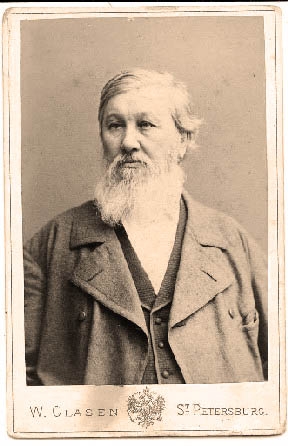 Danilewski: Der russische Spengler
Danilewski: Der russische Spengler
Seinen geistigen Mentor fand er früh in dem Naturwissenschaftler und Geschichtsdenker Nikolai Jakowlewitsch Danilewski, dessen 1871 veröffentlichtes Buch Rußland und Europa. Eine Untersuchung der kulturellen und politischen Beziehungen der slawischen zur germanisch-romanischen Welt zur „Bibel der Panslawisten“ wurde. Danilewski, der von 1822 bis 1885 lebte, wirkt mit seiner Streitschrift für den Eigencharakter Rußlands bis heute in die nationalen Identitätsdebatten nach. Alexander Dugin, einflußreicher Kopf der heutigen Eurasischen Bewegung, nennt Danilewski neben den Geschichtsphilosophen Oswald Spengler und Arnold J. Toynbee als geistige Mentoren.14 Der Biologe, der Mitte des 19. Jahrhunderts neben Dostojewski den „Übergang von einer religiös-nationalen zu einer säkulär-nationalen Geschichtsphilosophie“15 geprägt hatte, gilt zugleich als wissenschaftlicher Begründer des Panslawismus. In Rußland und Europa argumentiert er anhand vererbter seelischer Eigenschaften verschiedener Kulturkreise, aber auch – gemäß dem Stand der damaligen Anatomie – auf Grundlage von Schädel- und Kieferform. Europa, das eigentlich nur eine „westliche Halb-Insel Asiens“ darstelle, so Danilewski, sei eine willkürlich definierte Landmasse, als deren Teil sich Rußland keineswegs verstehen dürfe: „Es bezeichnet nur das Gebiet der großen germanisch-romanischen Zivilisation – es ist ihr Synonym, und nur mit der fortschreitenden Entwicklung dieser Zivilisation erhielt das Wort ‚Europa‘ den Sinn und die Bedeutung, in der es jetzt angewandt wird.“ Danilewski erkennt wenige historische Gemeinsamkeiten zwischen Rußland, jenem Reich zwischen der germanisch-romanischen Welt und Asien, und dem Westen: „Gehört nun Rußland in diesem Sinne zu Europa? Leider oder erfreulicherweise, zum Glück oder zum Unglück – nein, es gehört nicht dazu. Es nährte sich nicht durch keine einzige der Wurzeln, durch welche Europa sowohl wohltätige wie schädliche Säfte unmittelbar einsog (…) Rußland bildete keinen Teil des erneuerten Römischen Reiches Karls des Großen“, und es „gehörte nicht zur theokratischen Föderation, welche die Monarchie Karls ablöste“.16

Danilewski betont, schärfer und entschiedener als Uwarow und auch Dostojewski, die Gegensätze seiner Nation zur europäischen, „germanisch-romanischen Zivilisation“ und deren erdrückender Dominanz. Die Bemühungen der Westler seit Peter dem Großen, Rußland in Anlehnung an das Vorbild des Westens zu modernisieren, seien zwangsläufig zum Scheitern verurteilt gewesen. Denn auch aus der Sicht der Europäer stelle das Slawentum mit Rußland an der Spitze einen vollkommen eigenständigen, organisch gewachsenen Kulturkreis zwischen Europa und Asien dar. Danilewski nennt einen Großteil der Charakterisierungen, die noch heute zum Teil unser Rußlandbild prägen. Der Slawe, so der Biologe, habe im Laufe seiner Geschichte eine außerordentliche Duldsamkeit, Rechtsgläubigkeit und eine Liebe der Gewaltlosigkeit entwickelt. In scharfem Gegensatz dazu stehe Europa: es sei historisch geprägt von Gewaltsamkeit bei gleichzeitig ausuferndem Individualismus, religiöser Unduldsamkeit und einem verlogenen Amtsglauben. Die angeblichen Gründe benennt Danilewski in der Kombination des Charakters der germanisch-romanischen Völker mit dem Katholizismus und schließlich dem den Nihilismus einleitenden Protestantismus. Rußland hingegen habe sich – trotz der Bemühungen prowestlicher Kräfte – nie an diesem Verfallsprozeß beteiligt und sich eine organisch gewachsene Volksseele, Widerwillen gegen den Parteienstaat und den Vorrang des Kollektivs vor dem Individuum bewahren können.
Dabei nimmt Danilewski Spenglers Theorien aus dem Untergang des Abendlandes von 1918 vorweg, eben nur mit eindeutig prorussischer Präferenz. Auch er betrachtet die Weltgeschichte aus der Perspektive voneinander unabhängiger, einem Aufstiegs- und Verfallsprozeß unterworfenen Kulturtypen. Während sich der germanisch-romanische Westen im Niedergang befinde, solle ihm als aufstrebende Macht Rußland an der Spitze eines „Allslawischen Bundes“, zu dem auch das orthodoxe Griechenland gehöre in einem „Weltkampf“ entgegentreten. Die Idee des europäischen Gleichgewichts, wie es vor allem Großbritannien forcierte, diene nicht dem russischen Interesse. „Der Kampf mit dem Westen ist das einzige Rettungsmittel sowohl zum Ausheilen unserer russischen Kulturkrankheiten wie auch zur Entfaltung der allslawischen Sympathien“, so sein Fazit.17 Danilewskis oft ins Klischee abgleitende, radikale Thesen fanden in der russischen Gesellschaft des 19. Jahrhunderts eine breite Anhängerschaft.
Die frühen Eurasier: Asien als Heimat
Danilewskis Einfluß auf konservative und traditionalistische Bewegungen in Rußland entspricht der Wirkmächtigkeit Spenglers innerhalb der Konservativen Revolution in Deutschland. Mit seiner Idee eines expliziten Sonderbewußtseins, eines „Kontinents“ zwischen Europa und Asien nahm Danilewski zugleich auch die eurasische Ideenwelt vorweg. Die „Eurasische Bewegung“, deren Ursprünge sich in einem 1921 im bulgarischen Sofia von vier russischen Emigranten veröffentlichten Sammelband namens Der Auszug nach Osten (im russischen Original: Ischod k Vostoku) finden, verstand den geographischen Raum – ebenso wie Danilewski – als wichtigste Kategorie der eigenen Identität. „Die russischen Menschen und die Menschen der Völker der ‚Rußländischen Welt‘ sind weder Europäer noch Asiaten. Da wir mit den verwandten und uns umgebenden Kultur- und Lebenselementen verschmolzen sind, schämen wir uns nicht, uns als Eurasier zu betrachten (Hervorhebung im Original, J. S.)“, heißt es in dem von dem Musikologen Petr Petrovič Suvčinskij, dem Geographen Petr Nikolaevič Savickij, dem Theologen Georgij Wassilewitsch Florowskij sowie dem Slawisten Nikolaj Sergeevič Trubeckoj herausgegebenem Werk.18 Die vier Autoren entstammten, ebenso wie die intellektuelle Mehrheit der eurasisch gesinnten Exilrussen, der universitären Elite des zaristischen Rußlands.
Bemerkenswerterweise waren die Herausgeber von Ischod k Vostoku in drei Fällen auch ostukrainischer Herkunft und plädierten für eine Einbindung ihrer Heimat in ein zukünftiges, russisch dominiertes eurasisches Imperium. Die Konflikte und Debatten der Gegenwart deuteten sich bereits an. So wandten sich die Eurasier gegen einen bisher dominanten Eurozentrismus und betonten statt dessen, in mindestens historisch korrigierender Absicht, das asiatische Erbe Rußlands. Entscheidend für die Identität ihres Vaterlandes sei der fruchtbare kulturelle, politische und militärische Austausch Rußlands mit Asien vom 13. bis ins 19. Jahrhundert. Während die offizielle Geschichtsschreibung im frühmittelalterlichen Großreich der Kiewer Rus den Ursprung des modernen Rußlands erkannte, betonten die Eurasier die mongolischen Eroberungszüge durch Dschingis Khan im 13. Jahrhundert als Grundlage der eigenen Identität. Damals sei es zu einer ersten imperialen Vereinigung des Großkontinents Eurasien gekommen, auf dessen Territorium sich später zum größten Teil auch das Zarenreich und die Sowjetunion erstreckten. Unter russischer Dominanz bildete sich so eine eigene, multikulturell geprägte, seit 700 Jahren bestehende Zivilisation heraus, die den europäischen Kultureinfluß in Rußland marginal erscheinen lasse – so die ersten Eurasier in Ischod k Vostoku.19 Den geographischen Begriff „Eurasien“ hatte bereits in den 1880er Jahren der österreichische Geologe Eduard Suess eingeführt. Die Emigranten erweiterten ihn im Sinne einer eigenständigen, politischen und kulturell verstandenen Großmacht, die unter anderem auch Ostukrainer, Weißrussen und die Völker Mittelasiens, darunter den Turan als Urheimat der heutigen Türken, umfassen sollte.
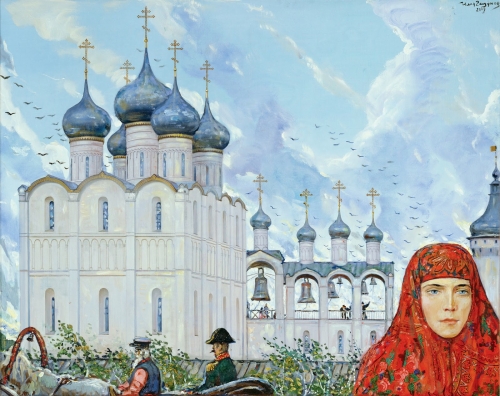
Orthodoxer Glauben als verbindendes Element
Obwohl es mit dem Panslawismus als einer weiteren „antiwestlichen Abgrenzungs- und imperialen Legitimationsstrategie“20 zahlreiche ideologische Schnittmengen gibt, betonte der Eurasismus deutlich stärker die asiatische und östliche Komponente in der russischen Identität. Dementsprechend wurde auch das Modell westlicher Demokratie und der dort verortete Liberalismus, anders als bei den Panslawisten, fast durchgehend abgelehnt. An die Stelle des ebenfalls aus Europa importierten Bolschewismus sollte eine sogenannte Ideokratie treten, deren zentrale Elemente Elitenherrschaft, Einparteiensystem und eine allgemeinverbindliche, eurasische Staatsideologie bilden. Die Eurasier waren sich der ideologischen und geographischen Schnittmengen mit dem Sowjetstaat und dessen Fähigkeit, die territorialen Grundlagen eines zukünftigen eurasischen Reiches zu sichern, durchaus bewußt. So sollte der Sozialismus laut einzelnen Strategien seit 1926 nicht etwa gestürzt, sondern vielmehr mittels einer Machtübernahme innerhalb der Kommunistischen Partei durch die „wahre Ideologie“ des Eurasismus ersetzt werden.21 Den wesentlichen Unterschied zum „Sozialismus in einem Land“ bildete jedoch der Bezug auf den orthodoxen Glauben als staatstragende Religion.
Diese Bewegung des Jewrasistwo erfuhr in den russischen Emigrantenkreisen nach der Oktoberrevolution 1917 in Europa ihre Blütezeit, beschränkte sich jedoch im Wesentlichen auf Intellektuellenzirkel. Denn die Positionen der Eurasier fanden sich vor allem seit 1923 im Eurasischen Verlag sowie verschiedenen eigenen Periodika, unter anderem in Berlin, Paris, Prag und Brüssel, wieder. Zwar gab es vor allem seitens ehemaliger weißer Offiziere Pläne zum Aufbau einer eurasischen Partei und einer stärkeren Einflußnahme und Bekämpfung des Sozialismus in der UdSSR, jedoch wurden diese Versuche schnell vom sowjetischen Geheimdienst beendet. 1929 spaltete sich die Bewegung nach langen Flügelkämpfen in ein linkes, prosowjetisches sowie ein traditionalistisches, christlich-orthodoxes Lager. Erst in der geopolitischen Debatten nach dem Zusammenbruch der Sowjetunion 1991 entfaltete der Eurasismus sein ideologisches Potential erneut. Durch das zeitgleiche Auseinanderfallen des Warschauer Paktes sah sich die neugegründete Russische Föderation gezwungen, vor allem im mittelasiatischen Raum der ehemaligen Sowjetrepubliken verstärkt die politische und wirtschaftliche Zusammenarbeit zu suchen. Innerhalb der politischen und intellektuellen Elite Rußlands erfuhr der Eurasismus als Alternative zur Westbindung eine Wiedergeburt. „Raum, Hegemonie, Staatlichkeit und Multiethnizität“ seien die zentralen Kategorien des politischen Eurasismus nach 1990, betont der Politikwissenschaftler Jens Fischer. Als dessen zentrale Werte in der politischen Praxis nennt er die „Liebe zu Rußland, materielles und geistiges Eigentum Rußlands, staatliche Einheit, territoriale Unversehrtheit, Familie, Kollektivismus, Freiheit der Persönlichkeit, gewissenhafte Arbeit, Demokratie, soziale Gerechtigkeit, Gleichberechtigung der Völker, multinationale Kultur, Selbstlosigkeit in der Verteidigung des Vaterlandes, Geistigkeit“22. Unter der pragmatisch-selbstbewußten Außenpolitik von Präsident Wladimir Putin haben diese Werte erneut Konjunktur, ideologisch erweitert und mit den Denkern der europäischen Konservativen Revolution verknüpft wurden sie jedoch von Alexander Dugin.
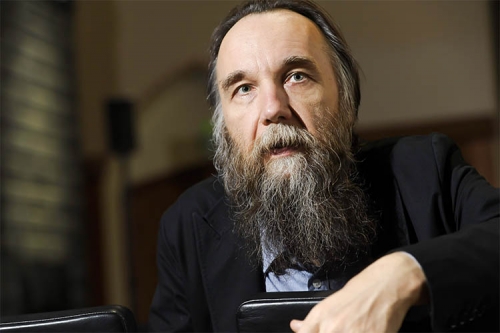
Dugin: Neoeurasismus gegen US‑Imperialismus
Dugin, 1962 in Moskau geboren, ist der wichtigste Kopf der „neoeurasischen Bewegung“ nach 1990. Seine Konjunktur erfuhr der Eurasismus, freilich stark modifiziert, angesichts der „geopolitischen Tragödie“ des Zusammenbruchs der Sowjetunion, wie Dugin selbst betont.23 Anders als der klassische russische Nationalismus, der nach 1990 ebenfalls wieder auflebte, geht es den Neoeurasiern jedoch nicht allein um eine Rückkehr zur alten, ethnisch gebundenen russischen Großmacht. Zugleich handelte es sich bei Dugins Ideologie keineswegs um eine Aktualisierung der eurasischen Konzepte der 1920er Jahre. Drei Elemente, so der Historiker Stefan Wiederkehr, kennzeichneten den Neoeurasismus: „Erstens dominierte bei Dugin das Denken in geopolitischen Kategorien. Zweitens stützte er sich zu Beginn der neunziger Jahre stärker auf das Gedankengut der westeuropäischen Neuen Rechten und deren Kanon von älterer Literatur als auf den klassischen Eurasismus. Deshalb umfaßte drittens der Eurasienbegriff Dugins zu Beginn der neunziger Jahre die zusammenhängende Landmasse von Europa plus Asien (Hervorhebung im Original, J. S.).“24
Ziel, so Dugin zu Beginn der 1990er Jahre, sei ein „eurosowjetisches Imperium von Dublin bis Wladiwostok“, Europa sei es darin auf Grundlage einer pax eurasiatica bestimmt, „freiwillig oder unfreiwillig der UdSSR beizutreten“.25 Daß die geopolitische Tradition der sowjetischen Supermacht jedoch sich nicht ohne weiteres wiederbeleben ließe, wurde Dugin schnell bewußt. Statt dessen suchte er verstärkt Allianzen mit Kräften, die ebenfalls gegen die US-amerikanische Dominanz und den westlichen Liberalismus gerichtet sind. Zu seinen Austauschpartnern innerhalb sogenannter Rundtischgespräche in der führenden Wochenzeitung der neoeurasischen Bewegung, Den (Der Tag), zählten unter anderem Vertreter der europäischen Neuen Rechten, darunter der Franzose Alain de Benoist und der Belgier Robert Steuckers, aber auch Muslime. Anders als die Autoren des Jewrasistwo der 1920er Jahre erkannte Dugin nicht im „germano-romanischen“ Europa den Feind, sondern in den USA als einzig verbliebener Weltmacht und der ihr zugrunde liegenden Ideologie des Liberalismus. Orientiert an Carl Schmitts Idee der Weltgeschichte als Kampf von Land- gegen Seemächte betrachtete er eine zukünftige, globale Eurasische Union unabhängiger Staaten und Kulturen als Gegenmodell zur US-amerikanischen Idee der „One World“.
Innerhalb dieses weit über die ehemalige Sowjetunion hinausweisenden „heiligen Eurasischen Reichs“ sollten die Völker ihre Werte und Traditionen vor dem Liberalismus verteidigen, so Dugin. Statt einer weltweiten US-Dominanz schlug er eine „Autarkie der Großräume“ vor. Damit einher geht die Ablehnung jeder Form von Universalismus. In einem Interview mit dem deutschen Wochenmagazin Der Spiegel vom Juli dieses Jahres betonte Dugin: „Es gibt keine universellen Werte. Die, die dafür gehalten werden, sind eine Projektion westlicher Werte.“ „Die westliche Zivilisation“, so legte er nach, sei „eine rassistische, ethnozentristische Zivilisation. Jeder Westler ist ein Rassist – kein biologischer, wie Hitler, aber kulturell. Deswegen denkt er, es gebe nur eine Zivilisation – oder Barbarei.“26 Die Thesen von Dugin erscheinen oft stark überspitzt und auf öffentliche Skandalisierung programmiert. Die neoeurasische Ideologie, die Dugin sowohl als Überwindung von Liberalismus, Kommunismus als auch Faschismus versteht, verdichtete er in dem 2009 auf Russisch und 2013 in der deutschen Übersetzung erschienenen Sammelband Die Vierte Politische Theorie. Aufbauend auf Martin Heideggers Ontologie entwarf ein Autorenkollektiv um Dugin ein theoretisches Modell, das als Synthese und Überwindung der drei Großideologien der Moderne verstanden werden soll. Im Mittelpunkt der Kritik stehen sowohl der westliche Fortschrittsoptimismus als auch der Glaube an ein „Ende der Geschichte“, wie es der US-amerikanische Politikwissenschaftler Francis Fukuyama voreilig prognostiziert hatte. Statt dessen glaubt Dugin, in der Tradition von Spengler, an eine Wiederkehr der Geschichte: „Im Wesentlichen haben wir es aber mit einer Erneuerung und Fortsetzung jenes westlichen Universalismus zu tun, der von dem Römischen Reich durch das christliche Mittelalter und durch die Moderne im Sinne von Aufklärung und Kolonisierung überliefert wurde, bis hin zu den heutigen Erscheinungen von Postmodernismus und Ultraindividualismus.“27 Damit erweist sich Dugins Neoeurasismus zugleich als Wiederauflage der antiwestlichen Geschichtsphilosophie von Danilewski und als Erweiterung der eurasischen Geopolitik der 1920er Jahre. Mit einer Anpassung dieser Legitimationsideen russischer Großmachtpolitik an das 21. Jahrhundert gelang es ihm zugleich, weltweit Unterstützer zu finden – unter anderem auch in Brasilien und China. Auch in der deutschen Rechte findet Dugin Gehör, denn er betont, der Widerstand gegen die erdrückende US-amerikanische Dominanz sei zwangsläufig zugleich mit dem Streben nach nationalstaatlicher Souveränität der Bundesrepublik verbunden. In einem Interview mit Manuel Ochsenreiter für das Nachrichtenmagazin Zuerst! betonte Dugin: „Deutschland muß sich als unabhängiges, freies und souveränes politisches Gebilde definieren. Was auch immer die US-amerikanischen oder deutschen Politiker heute reden, die Wahrheit ist ganz einfach: Es gibt keine Freiheit in der Okkupation. Wenn Deutschland frei sein will, muß es gegen die Okkupation rebellieren.“28
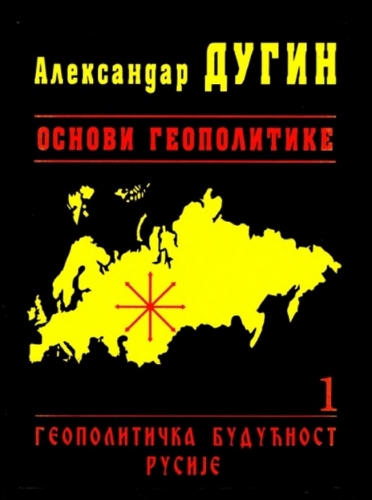 Im Zuge der ukrainischen Krise geriet auch Dugin ins Visier der westlichen Öffentlichkeit; etablierte deutsche Zeitungen, darunter Die Welt und die Frankfurter Allgemeine Zeitung, porträtierten den vermeintlichen „rechtsradikalen Guru“ und „Einflüsterer Putins“29. Dugins Stern scheint jedoch zu sinken. Im Mai dieses Jahres wurde er als Soziologieprofessor an der staatlichen Moskauer Lomonossow-Universität vom Rektor entlassen. Grund waren unter anderem sein Aufruf, die Opfer des Massakers von Odessa vom Mai 2014 mit dem Blut der „Kiewer Junta“ zu rächen, sowie eine sich anschließende Unterschriftensammlung gegen ihn. Als aktuell bedeutendster Vertreter der langen Tradition russischer Großreichsideen dürfte seine Stimme jedoch nicht leiser werden. Europas Patrioten und Konservative sollten diesen Gegenpol zur ideologischen Dominanz des Westens zu schätzen wissen. Aber sie sollten auch nicht vergessen: Die Ideen dieses wichtigen Verbündeten stehen in einer langen Tradition russischen Reichsbewußtseins. Sie verkörpern nicht mehr und nicht weniger als den ideologischen Überbau nationaler Interessen.
Im Zuge der ukrainischen Krise geriet auch Dugin ins Visier der westlichen Öffentlichkeit; etablierte deutsche Zeitungen, darunter Die Welt und die Frankfurter Allgemeine Zeitung, porträtierten den vermeintlichen „rechtsradikalen Guru“ und „Einflüsterer Putins“29. Dugins Stern scheint jedoch zu sinken. Im Mai dieses Jahres wurde er als Soziologieprofessor an der staatlichen Moskauer Lomonossow-Universität vom Rektor entlassen. Grund waren unter anderem sein Aufruf, die Opfer des Massakers von Odessa vom Mai 2014 mit dem Blut der „Kiewer Junta“ zu rächen, sowie eine sich anschließende Unterschriftensammlung gegen ihn. Als aktuell bedeutendster Vertreter der langen Tradition russischer Großreichsideen dürfte seine Stimme jedoch nicht leiser werden. Europas Patrioten und Konservative sollten diesen Gegenpol zur ideologischen Dominanz des Westens zu schätzen wissen. Aber sie sollten auch nicht vergessen: Die Ideen dieses wichtigen Verbündeten stehen in einer langen Tradition russischen Reichsbewußtseins. Sie verkörpern nicht mehr und nicht weniger als den ideologischen Überbau nationaler Interessen.
Anmerkungen
1 Vgl. Pëtr Kropotkin: Ideale und Wirklichkeit in der russischen Literatur. Zürich: Diogenes 2003 (= Kropotkin):, S. 36 f. Fürst Kropotkin (1842–1921), Geograph, Schriftsteller und einer der wichtigsten anarchistischsten Theoretiker, betrachtet vor allem den für Russland verheerenden asiatischen Mongolensturm als wesentlich für die Bildung eines Moskauer Zentral- und Militärstaates. Mit Hilfe der Mongolenkhane sei es dem Großfürstentum Moskau gelungen, die umliegenden Stadtstaaten und Fürstentümer zu unterwerfen: „Der Mongoleneinfall, der im Jahre 1223 stattfand, zerstörte diese ganze junge Zivilisation und leitete Rußland in ganz neue Bahnen.“
2 So das Urteil des Dekabristen Gawriil Stepanowitsch Batenkow. Zitiert nach: Nikolaj I. Zimbajew: Zur Entwicklung des russischen Nationalbewußtseins vom Aufstand der Dekabristen bis zur Bauernbefreiung. In: Die Russen. Ihr Nationalbewußtsein in Geschichte und Gegenwart. Herausgegeben von Andreas Kappeler. Nationalitäten- und Regionalprobleme in Osteuropa. Band 5. Köln: Markus Verlag 1990, S. 38. Die Bezeichnung „Dekabrist“ leitet sich von der russischen Bezeichnung für „Dezember“, dem Monat des Aufstandes, ab.
3 Vgl. Frank Golczewski/Gertrud Pickhan: Russischer Nationalismus. Die russische Idee im 19. und 20. Jahrhundert. Darstellung und Texte. Göttingen: Vandenhoeck & Ruprecht 1998 (= Golczewski/Pickhan), S. 15.
4 Vgl. ebd., S. 22.
5 Zitate: Ebd., S. 25.
6 N. L. Brodskij, Rannie slavjanofily. Moskau 1910, S. LXII. Zitiert nach: Ebd., S. 25.
7 Fjodor M. Dostojewski: Schuld und Sühne. Rodion Raskolnikoff. Roman. Aus dem Russischen von E. K. Rashin. München: Piper 2008, S. 7 ff.
8 Ebd., S. 741.
9 Hans-Jürgen Gerigk: Dostojewskijs Entwicklung als Schriftsteller. Vom „Toten Haus“ zu den „Brüdern Karamasow“. Frankfurt am Main: Fischer 2013 ( = Gerigk), S. 53 f.
10 Kropotkin, S. 251.
11 Gerigk, S. 74.
12 Ebd., S. 231f.
13 Ebd., S. 221.
14 Vgl. das Interview im Spiegel mit Dugin vom Juli 2014: „Jeder Westler ist ein Rassist.“ Spiegel-Gespräch. Der Spiegel. Nr. 29/14. 7. 2014. S. 120–125 ( = Der Spiegel), hier S. 121.
15 Golczewski/Pickhan, S. 39.
16 Nikolai Jakowlewitsch Danilewski: Rußland und Europa. Eine Untersuchung der kulturellen und politischen Beziehungen der slawischen zur germanisch-romanischen Welt. Übersetzt und eingeleitet von Karl Nötzel. Osnabrück: Otto Zeller 1965 ( = Danilewski), S. 21.
17 Ebd., S. 235.
18 Ischod k Vostoku. Herausgegeben von Petr Petrovič Suvčinskij, Petr Nikolaevič Savickij, Georgij Wassilewitsch Florovskij, Nikolaj Sergeevič Trubeckoj. Sofia 1921. Zitiert nach: Stefan Wiederkehr: Die eurasische Bewegung. Wissenschaft und Politik in der russischen Emigration der Zwischenkriegszeit und im postsowjetischen Rußland. Köln/Weimar/Wien: Böhlau 2007 (= Wiederkehr), S. 34.
19 Vgl. dazu: Jens Fischer: Eurasismus: Eine Option russischer Außenpolitik? Berlin: Berlin Verlag 1998 (= Fischer), S. 39 f.
20 Wiederkehr, S. 33.
21 Vgl. ebd., S. 137.
22 Fischer, S. 107.
23 Vgl. Wiederkehr, S. 233.
24 Ebd., S. 234.
25 So Dugin in der führenden Wochenzeitung der neoeurasischen Bewegung, Den (Der Tag), 1992. Zitiert nach: Wiederkehr, S. 233.
26 Der Spiegel, S. 122.
27 Alexander Dugin: Die Vierte politische Theorie. London: Arktos 2013, S. 77 f.
28 „Ohne Rebellion keine Souveränität“. Deutsches Nachrichtenmagazin Zuerst! Januar 2014. S. 20–24, hier S. 22 f.
29 Vgl. Julia Smirnova: Putins Vordenker, ein rechtsradikaler Guru. Die Welt, 11. 7. 2014. Online einsehbar unter: www.welt.de/politik/ausland/article130011929/Putins-Vorde... (Stand vom 25. Juli 2014), oder Kerstin Holm: Auf diesen Mann hört Putin. Frankfurter Allgemeine Zeitung, 16. Juni 2014. Online einsehbar unter: www.faz.net/aktuell/feuilleton/debatten/



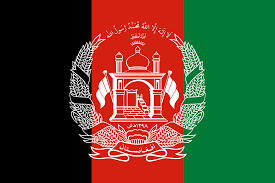

 del.icio.us
del.icio.us
 Digg
Digg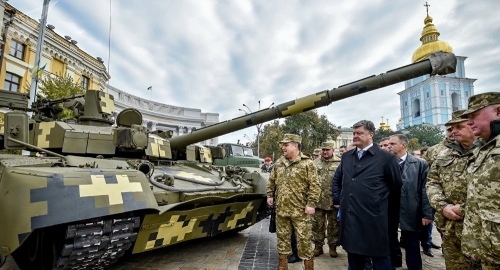
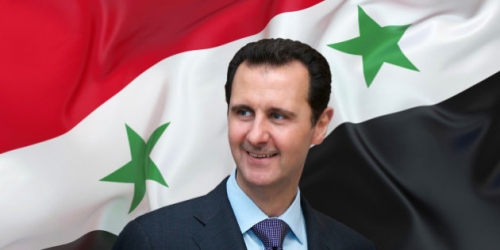
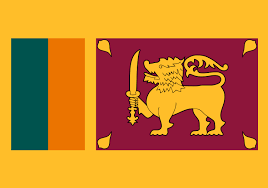
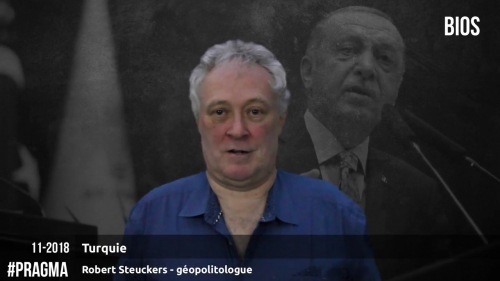
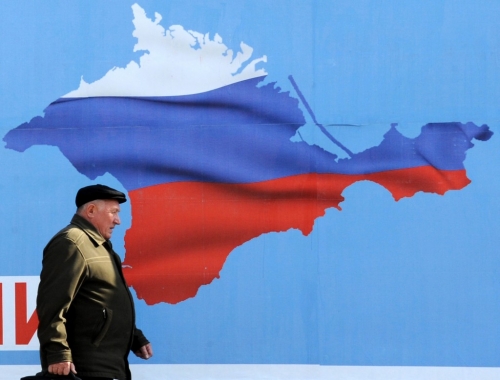
 The Russian colonisation of Crimea, which began during the first campaigns against Constantinople, continued to develop during the Tmutarakan principality from the 10th to 12th centuries, on the territory of ancient Tamatarkha. Here, on the banks of the Cimmerian Bosphorus, one of the first Russian places of worship, a shrine to the Most Holy Virgin, was built. Nikon, the first of the chroniclers known to us, lived here; he was to become the abbot of the Kiev-Pechersk monastery. Here Boyan, the legendary teller of tales, sang epics to the accompaniment of his dulcimer. And on this place marched the forces of the prince of Novgorod-Severski, whose deed was celebrated in the inspired «Tale of Igor’s Campaign».
The Russian colonisation of Crimea, which began during the first campaigns against Constantinople, continued to develop during the Tmutarakan principality from the 10th to 12th centuries, on the territory of ancient Tamatarkha. Here, on the banks of the Cimmerian Bosphorus, one of the first Russian places of worship, a shrine to the Most Holy Virgin, was built. Nikon, the first of the chroniclers known to us, lived here; he was to become the abbot of the Kiev-Pechersk monastery. Here Boyan, the legendary teller of tales, sang epics to the accompaniment of his dulcimer. And on this place marched the forces of the prince of Novgorod-Severski, whose deed was celebrated in the inspired «Tale of Igor’s Campaign».
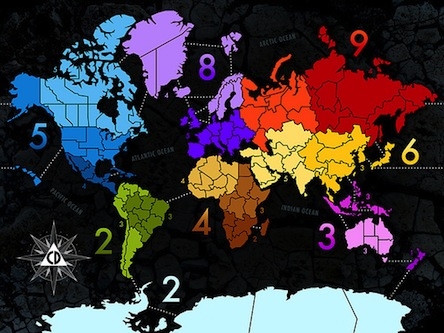
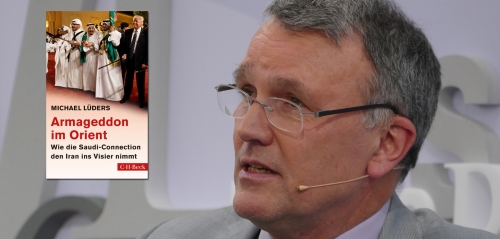
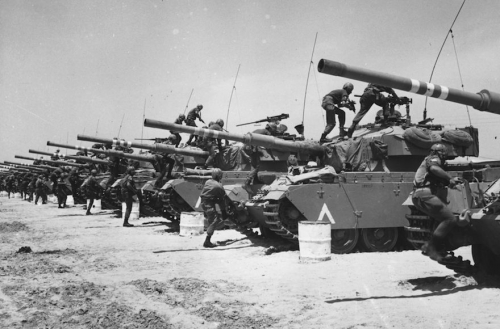
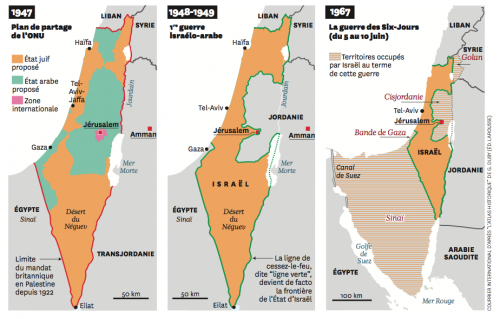
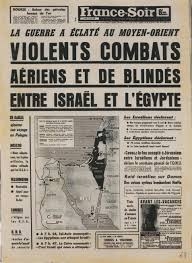 Dans le monde arabe, à la défaite militaire s’ajoute la défaite symbolique. Il y a bien évidemment l’humiliation de l’occupation : le Sinaï égyptien (qui sera récupéré par le président Sadate), le Golan syrien (annexé en 1981), les fermes libanaises de Chebaa et les territoires palestiniens de Gaza et de Cisjordanie (dont Jérusalem-Est), administrés auparavant par l’Égypte et la Jordanie. Il y a aussi la spoliation du peuple palestinien, qui se retrouve occupé et malmené pendant des décennies par une puissance étrangère. Mais il y a aussi l’échec du nationalisme arabe qui en annoncera bien d’autres. Cet échec de trois grandes armées arabes encouragera le réveil de la résistance palestinienne. Dans les années 1970, l’Organisation de libération de la Palestine (OLP) jouera un rôle analogue à celui de Nasser, décédé en 1970. En Jordanie comme au Liban, Yasser Arafat apparaîtra comme une figure tutélaire à son tour, stimulé par quelques succès militaires dont les grandes armées arabes ont été incapables. On retrouvera ce phénomène avec le Hezbollah libanais. Un peu plus de dix ans après cette guerre, à la cause arabe contre Israël se substituera une cause nouvelle, nourrie par la montée du wahhabisme à la faveur des pétrodollars, celle de la guerre d’Afghanistan (1979). Tandis que l’Égypte vient de signer un traité de paix avec Israël (ce que la Jordanie fera en 1994), des milliers de combattants venus du monde arabe se retrouveront ainsi plongés dans un conflit lointain au nom d’une appartenance religieuse, encouragés par les Américains et contre l’ennemi « impie » tout désigné : l’Union soviétique.
Dans le monde arabe, à la défaite militaire s’ajoute la défaite symbolique. Il y a bien évidemment l’humiliation de l’occupation : le Sinaï égyptien (qui sera récupéré par le président Sadate), le Golan syrien (annexé en 1981), les fermes libanaises de Chebaa et les territoires palestiniens de Gaza et de Cisjordanie (dont Jérusalem-Est), administrés auparavant par l’Égypte et la Jordanie. Il y a aussi la spoliation du peuple palestinien, qui se retrouve occupé et malmené pendant des décennies par une puissance étrangère. Mais il y a aussi l’échec du nationalisme arabe qui en annoncera bien d’autres. Cet échec de trois grandes armées arabes encouragera le réveil de la résistance palestinienne. Dans les années 1970, l’Organisation de libération de la Palestine (OLP) jouera un rôle analogue à celui de Nasser, décédé en 1970. En Jordanie comme au Liban, Yasser Arafat apparaîtra comme une figure tutélaire à son tour, stimulé par quelques succès militaires dont les grandes armées arabes ont été incapables. On retrouvera ce phénomène avec le Hezbollah libanais. Un peu plus de dix ans après cette guerre, à la cause arabe contre Israël se substituera une cause nouvelle, nourrie par la montée du wahhabisme à la faveur des pétrodollars, celle de la guerre d’Afghanistan (1979). Tandis que l’Égypte vient de signer un traité de paix avec Israël (ce que la Jordanie fera en 1994), des milliers de combattants venus du monde arabe se retrouveront ainsi plongés dans un conflit lointain au nom d’une appartenance religieuse, encouragés par les Américains et contre l’ennemi « impie » tout désigné : l’Union soviétique.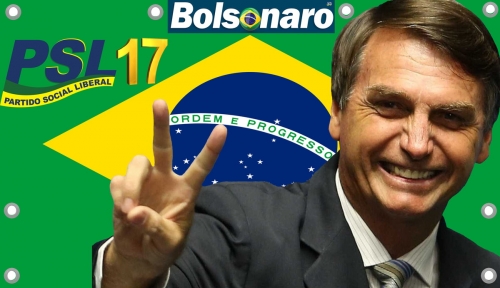
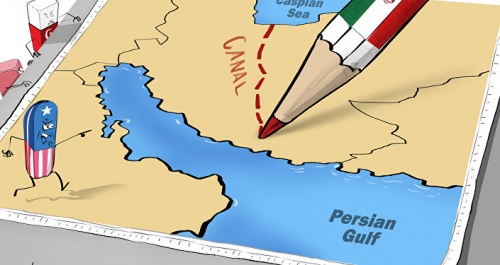


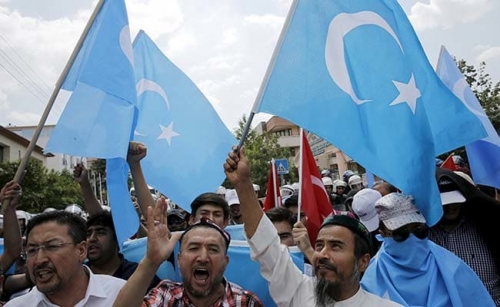
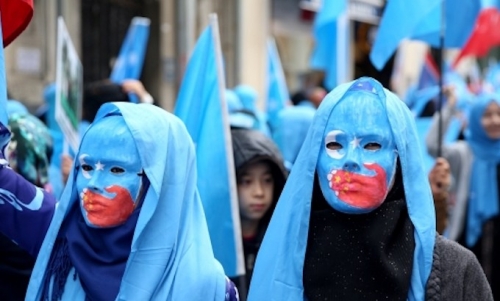
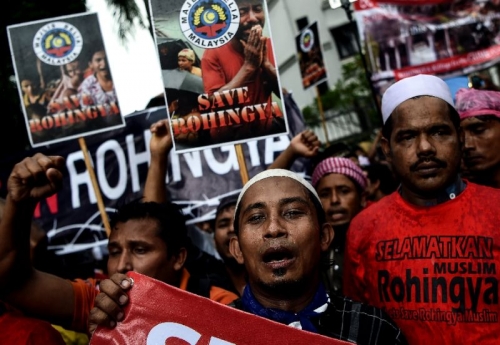
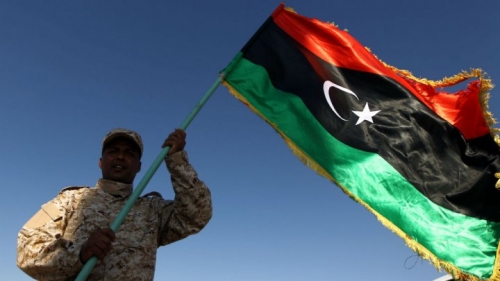
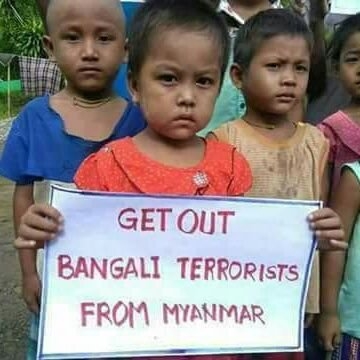 Modern Tokyo Times says, “In other words, just like Yazidis have been enslaved and raped by Sunni Islamists in Iraq, and the same Sunni Islamist Takfiri virus stating “Alawites to the grave, Christians to Beirut” in Syria, then the small mainly Buddhist tribe of the Mro equally face Islamist cleansing. Yet, if mass media corporations seek to be believed, then surely the Islamists of ARSA would be solely focused on the armed forces of Myanmar in order to protect Bengali Muslims. Instead, just like in Iraq where Sunni Islamists target Yazidis and other minorities who have no power – nor have persecuted Sunni Muslims – it seems that ARSA is following the Islamist mantra of cleansing, killing, and persecuting…Therefore, ARSA is threatening the small mainly Buddhist tribe of the Mro who number between 20,000 and 40,000 people. At the same time, Bengali Hindus caught in the path of ARSA also face the Islamist sword.”
Modern Tokyo Times says, “In other words, just like Yazidis have been enslaved and raped by Sunni Islamists in Iraq, and the same Sunni Islamist Takfiri virus stating “Alawites to the grave, Christians to Beirut” in Syria, then the small mainly Buddhist tribe of the Mro equally face Islamist cleansing. Yet, if mass media corporations seek to be believed, then surely the Islamists of ARSA would be solely focused on the armed forces of Myanmar in order to protect Bengali Muslims. Instead, just like in Iraq where Sunni Islamists target Yazidis and other minorities who have no power – nor have persecuted Sunni Muslims – it seems that ARSA is following the Islamist mantra of cleansing, killing, and persecuting…Therefore, ARSA is threatening the small mainly Buddhist tribe of the Mro who number between 20,000 and 40,000 people. At the same time, Bengali Hindus caught in the path of ARSA also face the Islamist sword.”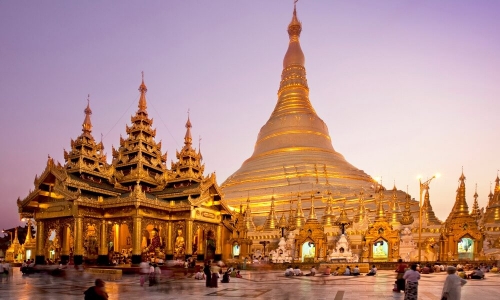

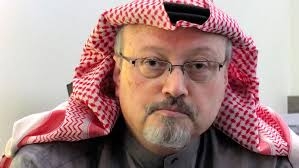
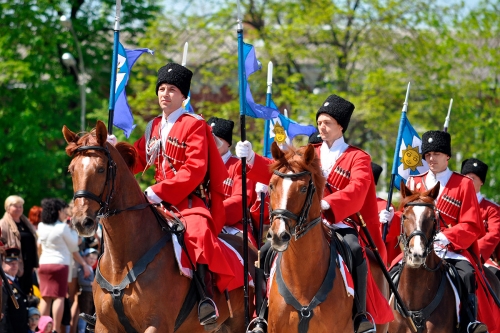
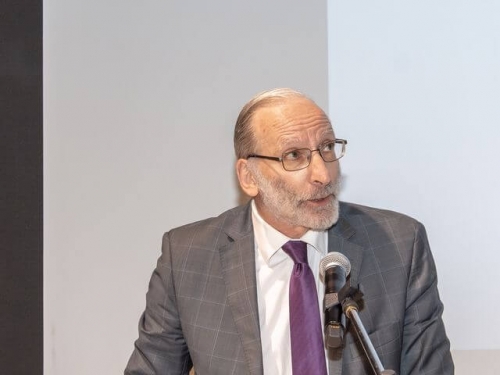
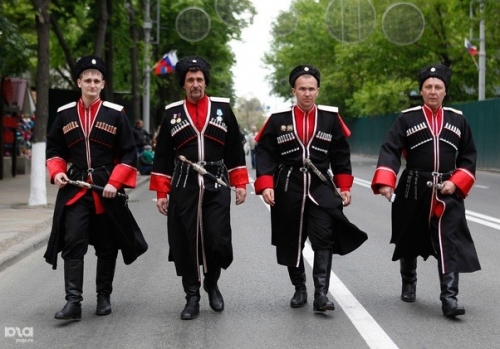

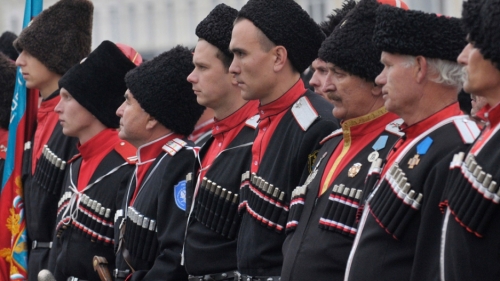
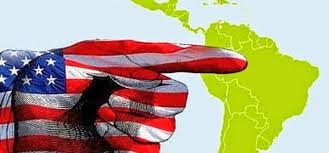



 Dostojewski: National-religiöse Überwindung des Nihilismus
Dostojewski: National-religiöse Überwindung des Nihilismus Danilewski: Der russische Spengler
Danilewski: Der russische Spengler


 Im Zuge der ukrainischen Krise geriet auch Dugin ins Visier der westlichen Öffentlichkeit; etablierte deutsche Zeitungen, darunter Die Welt und die Frankfurter Allgemeine Zeitung, porträtierten den vermeintlichen „rechtsradikalen Guru“ und „Einflüsterer Putins“29. Dugins Stern scheint jedoch zu sinken. Im Mai dieses Jahres wurde er als Soziologieprofessor an der staatlichen Moskauer Lomonossow-Universität vom Rektor entlassen. Grund waren unter anderem sein Aufruf, die Opfer des Massakers von Odessa vom Mai 2014 mit dem Blut der „Kiewer Junta“ zu rächen, sowie eine sich anschließende Unterschriftensammlung gegen ihn. Als aktuell bedeutendster Vertreter der langen Tradition russischer Großreichsideen dürfte seine Stimme jedoch nicht leiser werden. Europas Patrioten und Konservative sollten diesen Gegenpol zur ideologischen Dominanz des Westens zu schätzen wissen. Aber sie sollten auch nicht vergessen: Die Ideen dieses wichtigen Verbündeten stehen in einer langen Tradition russischen Reichsbewußtseins. Sie verkörpern nicht mehr und nicht weniger als den ideologischen Überbau nationaler Interessen.
Im Zuge der ukrainischen Krise geriet auch Dugin ins Visier der westlichen Öffentlichkeit; etablierte deutsche Zeitungen, darunter Die Welt und die Frankfurter Allgemeine Zeitung, porträtierten den vermeintlichen „rechtsradikalen Guru“ und „Einflüsterer Putins“29. Dugins Stern scheint jedoch zu sinken. Im Mai dieses Jahres wurde er als Soziologieprofessor an der staatlichen Moskauer Lomonossow-Universität vom Rektor entlassen. Grund waren unter anderem sein Aufruf, die Opfer des Massakers von Odessa vom Mai 2014 mit dem Blut der „Kiewer Junta“ zu rächen, sowie eine sich anschließende Unterschriftensammlung gegen ihn. Als aktuell bedeutendster Vertreter der langen Tradition russischer Großreichsideen dürfte seine Stimme jedoch nicht leiser werden. Europas Patrioten und Konservative sollten diesen Gegenpol zur ideologischen Dominanz des Westens zu schätzen wissen. Aber sie sollten auch nicht vergessen: Die Ideen dieses wichtigen Verbündeten stehen in einer langen Tradition russischen Reichsbewußtseins. Sie verkörpern nicht mehr und nicht weniger als den ideologischen Überbau nationaler Interessen.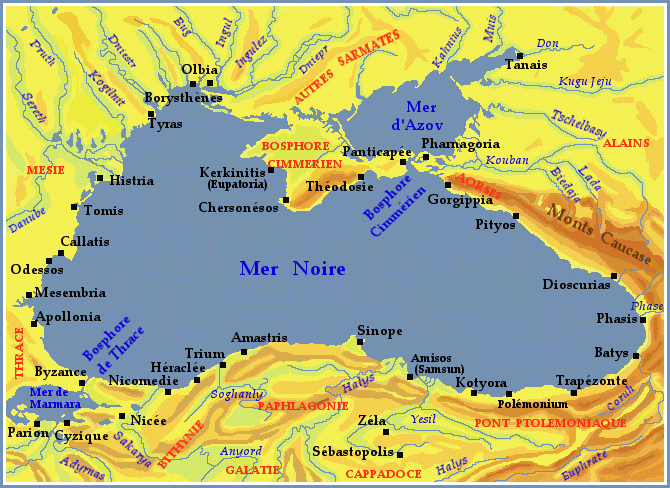

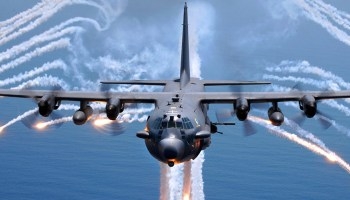
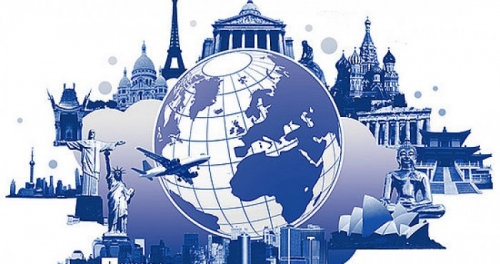
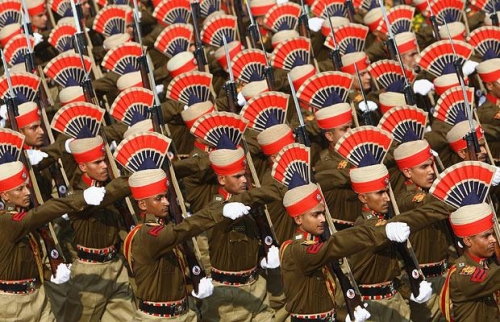
In seinem neuesten Buch sieht Michael Lüders den Orient am Abgrund. Und spiegelt dabei deutsche Dämonen.
„Armageddon im Orient – wie die Saudi-Connection den Iran ins Visier nimmt“, so der programmatische Titel. Der Autor der beiden Bestseller „Wer den Wind sät“ und „Die den Sturm ernten“ legt damit nach.
Mutig für Moslems
Lüders, so viel zur Person, ist studierter Politologe und Islamwissenschaftler, betreibt eine auf den Mittleren Osten spezialisierte Beraterfirma, ist Autor zahlreicher Sachbücher zu dieser Region, sowie einer Handvoll Romane. Er ist außerdem der Nachfolger Peter Scholl-Latours als Präsident der Deutsch-Arabischen Gesellschaft.
Die emotionale Bindung an die islamische Welt mag erklären, warum sich Lüders mit seinem neuen Buch so weit aus dem Fenster lehnt und gleichzeitig im Rahmen bleibt. „Armageddon im Orient“ ist ein sehr mutiges Buch, allerdings nur im Einsatz für Orient und Islam.
Lüders stellt darin nicht nur die im Untertitel so bezeichnete „Saudi-Connection“ an den Pranger, sondern ebenso in einer für westliche Länder und insbesondere Deutschland ganz außergewöhnlichen Schärfe und Deutlichkeit den jüdischen Einfluß auf die amerikanische Politik.
Von dieser amerikanischen Politik zeichnet er allerdings ein Zerrbild, daß primitiver in keinem Pamphlet gegen die „alten weißen Männer“ zu finden ist. Präsident Trump sei „die Verkörperung eines karikaturhaften Simpels“, dessen Politik der Gipfel der Plutokratie sei, in der reiche Großspender für die entsprechende Summe alles haben könnten. Seine Präsidentschaft sei die unverhüllte Fortsetzung der Privatgeschäfte mit anderen Mitteln.
Beweise?
Aus diesem Grund folgt Lüders Entstehungsgeschichte der Trumpschen Nahostpolitik auch großteils den Spuren von Jared Kushner. Die Geschäfte des jüdischen Schwiegersohns von Trump mögen noch so zwielichtig und seine Parteinahme für Israel noch so offensichtlich sein, Lüders Behauptung, der saudische Boykott Katars sei von Kushner eingefädelt worden, um Katar dafür zu bestrafen, daß sein Staatsfonds eine Verhandlung über die Refinanzierung einer Immobilie der Kushner Company platzen ließ, bedürfte starker Indizien und nicht nur der Spekulation.
Mit zweierlei Maß
Während Lüders seinen Lesern kompetent die politischen Verstrickungen des Orients entwirrt, bleibt die westliche Politik holzschnittartig primitiv: Trump habe sich von Saudis und jüdischen Zionisten kaufen lassen. Eine Betrachtung über die Verbindung von Innen- und Außenpolitik, wie er sie den Ländern des Orients angedeihen läßt, findet nicht statt.
Während er richtigerweise vor den Falschbehauptungen und der Gräuelpropaganda in der westlichen Presse warnt und seinen Lesern den machtpolitischen Hintergrund dieser Berichterstattung vor Augen führt, belegt er Behauptungen über den amerikanischen Präsidenten unreflektiert mit Zitaten aus amerikanischen Zeitungen, die Trump aus hauptsächlich innenpolitischen Gründen seit drei Jahren bis aufs Messer bekämpfen.
Selbst bei Zitaten aus „Fire and Fury“ läßt Lüders jegliche Quellenkritik vermissen. Obwohl es sich beim Autor dieses Buches um den Skandaljournalisten Michael Wolff handelt, gegen dessen Arbeitsweise auch bei früheren Veröffentlichungen erhebliche Vorwürfe erhoben wurden.
Während er immer wieder vor den moralischen Simplifizierungen warnt, mit denen die Propagandapresse die Weltpolitik in Gut und Böse einteilt, hat er am Ende seines Buches einfach die Rollen vertauscht. Nun steht das „anti-schiitische Dreieck“ aus Washington, Tel Aviv und Riad als großer Bösewicht da, während man für die Interessen Assads, Rußlands und des Irans Verständnis aufzubringen habe.
Dieses Messen mit zweierlei Maß hat System. Lüders füllt eine bestimmte Nische aus. Er bietet seinen Lesern scharfe Kritik an dem Narrativ, das uns tagtäglich aus der Mainstreampresse entgegenschallt. Diese Kritik untermauert er mit einer einseitig vereinfachten, aber umso eindringlicheren Beschreibung der Machtfaktoren, die den Mittleren Osten prägen.
Das ist erst einmal nicht schlecht. Aus meiner eigenen Jugenderfahrung kann ich bestätigen, daß dergleichen Literatur gerade bei jungen Menschen geeignet ist, überhaupt erst einmal die Ausbildung eines Bewußtseins zu fördern, das in politischen Tatsachen denkt, anstatt der planmäßigen Verblödung durch unsere politische Bildung zu folgen.
Trotzdem gegen das Eigene
Lüders liefert seinen Lesern aber gleichzeitig etwas, wovon ein Großteil des kritischen politischen Publikums doch nicht lassen will: Jenem schäbigen Überlegenheitsgefühl, daß dadurch entsteht, die eigenen Leute herunterzumachen. Das Selbstbild eines aufgeklärten Kämpfers für die von der eigenen Gemeinschaft Unterdrückten. Es ist die stärkste Triebkraft des etwas unglücklich als „Ethnomasochismus“ bezeichneten Phänomens.
Der Leser bekommt von Lüders ein Gefühl vermittelt, ähnlich demjenigen, daß ein grüner Student hat, nachdem ihm sein Postkolonialismusprofessorx erklärt hat, wie der strukturelle Rassismus Braune und Schwarze überproportional arbeitslos macht.
Am Ende seines Buches fordert Lüders die europäischen Staaten auf, Washington gegenüber entschlossen und einig ihre Interessen zu wahren. Doch diese Interessen bestehen für Lüders nur darin, keine armen Moslems zu bombardieren und keine Flüchtlingsströme abzubekommen, welche den Populismus förderten und der liberalen Demokratie schadeten. Eine sichere Grenze scheint ihm hierfür allerdings keine Lösung zu sein.
Keine eigenen Interessen
Hier liegt der Hund begraben. Lüders kennt keine eigenen Interessen Deutschlands, jedenfalls nicht des deutschen Volkes, allenfalls der Bundesrepublik. Für seine Liebe zur islamischen Welt riskiert er das Todesurteil der westlichen Nachkriegsöffentlichkeit: Antisemit zu sein. Doch bricht er nicht aus dem Opferspiel aus, er nimmt nur die Underdogs unter den Opfern, die Muslime, gegen die jüdischen Edelopfer in Schutz.
Seinem eigenen Nicht-Opfer-Volk fehlt in diesem Schema die Rechtssubjektivität. Ebenso allen anderen westlichen Ländern. Deshalb kann er nicht verstehen, daß der Orient nicht gerade Trumps oberste Priorität ist, er es sich aber nicht leisten kann, jene Republikaner im Kongreß zu verlieren, die bei AIPAC auf der Soldliste stehen. Lüders kommt gar nicht auf den Gedanken, daß ein Amerikaner die geplante Umsiedelung der Palästinenser auf die Sinaihalbinsel bedauern mag, die geplante Umsiedelung von Guatemalteken nach Iowa und Wisconsin hingegen als direkte Bedrohung auffaßt.
Kein Horrorszenario im Orient, sondern nur die Wiedergewinnung unseres Status als eines eigenständigen Rechtssubjekts kann uns die Handlungsfähigkeit zurückgeben, eigene Interessen zu vertreten und unabhängig von dem heuchlerischen Geschrei fremder Interessengruppen zu wahren.
Michael Lüders: Armageddon im Orient, Wie die Saudi-Connection den Iran ins Visier nimmt, München 2018, 272 S., 14,95 €. ISBN 978-3-406-72791-7